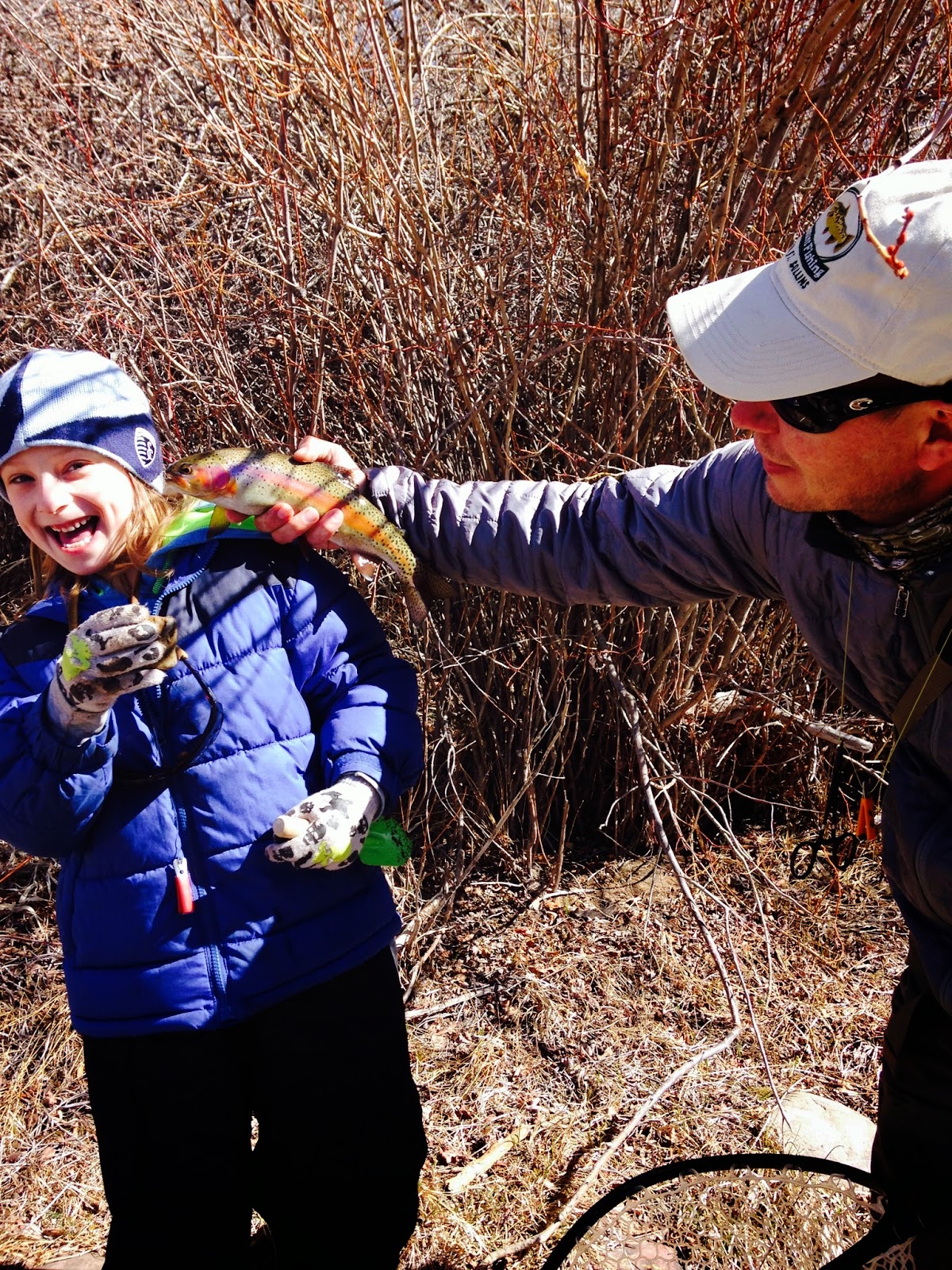Hucking Streamers on the Fryingpan
As we all
know, fly fishing the world-famous Fryingpan River can be an incredible
experience. It’s a well known tailwater fishery with rainbow and brown trout
that have their bellies full of mysis shrimp along with all the other amazing
bug life that makes up the fishes diet.
The dry fly fishing is the main attraction for those who venture up the
river to chase down the trout that frequently are sipping midges and BWOs in
the surface film. There is an
overlooked method of fishing that can provide intense hook-ups and a very
visual way to fish the Fryingpan. Streamer fishing can be a great way to spend
a day on the river. No more 6x or 7x
tippets and size 22 flies. We’re talking heavy tippets, short leaders and big
meaty flies.
As with
other fly fishing techniques, there’s a method to the madness of throwing
streamers. I prefer a 5wt or 6wt rod
with a little more back bone to them. Having
a heavier rod will help you turn over those bigger flies while casting. Don’t be afraid to cut down your leaders as well.
Leaders that are in the range of 4 to 6 feet in length (commonly referred to as
shorty or pocket water leaders), in addition to the tippet material will make
up your complete streamer leader. Your tippet sizes are determined based upon
the fishing conditions at hand. Ideally, I like to fish 2x through 4x tippets
on the Pan, though heavier tippet sizes can be appropriate on overcast or
cloudy days. However, if there’s high
sun in your picture, knock down the size of your tippet to be along the lighter
end of the spectrum at 3x or 4x.
When it
comes down to fly selection we all have favorites that find their place in our own
boxes. As with other styles of flies, there are a variety of patterns that
work, some more eye catching than others. A few go-to flies to start with
include: Barr’s Conehead Slumpbuster in natural, black and olive, sizes
4 thru 8. Sand’s Stinging Sculpin in natural, black and olive, size 8
and Mini Sculpin in natural and black, sizes 4 thru 8.
The key here
is to fish patterns that represent the food source that you’re trying to imitate,
in this case juvenile trout and sculpins. What is a sculpin? A sculpin is a
bottom dwelling, reclusive fish that inhabit most trout streams, with large
flat heads, ranging in size from 1” to 4” long. These fish will be found underneath rocks and
logs, in shallower, quick water. Sculpins
can be a favorite food source for a big brown trout lurking for a hearty meal,
or in some cases, brown trout will become territorial over a section of river
and will attack any other smaller trout or sculpin that swims through that “owned”
piece of water. These territorial trout are often larger than most and are referred
to as “sculpin killers”.
Techniques
to fishing streamers can be broken down simple to
understand. Let me paint a picture for
you on what you’re going to be looking for in the water that you’ll be fishing.
Generally, what you’ll be looking for is pocket water (ie: behind boulders, logs
and back eddies, runs and seams). The best point on a stretch of river to start
your fishing is at the head or top of a run and work your way down, making
casts across the current and slightly down stream of your position. It’s always
good to create motion on your fly while it swings through the current. Motion
can be made by pulling in line using your free hand (known as your stripping
hand) or by simply twitching the tip of your rod. Play around with the speed of your retrieve. Often times, the retrieval speed can be the
difference maker in hook ups. Don’t
forget to cover water, making 5-10 casts per each run or pocket. Catch a few fish and then move on to the next
piece of water.
The tug is
the drug! Streamer fishing can be a very
exciting avenue in the world of fly fishing. I hope this guide to fishing
streamers opens up new doors and teaches you some new tricks that will keep you
fishing for a lifetime.
Words by Travis Lyons
Photographs courtesy of Kirk Webb, Scott Spooner and Taylor Creek Fly Shop
Reprinted from "Fly on the Wall"





















